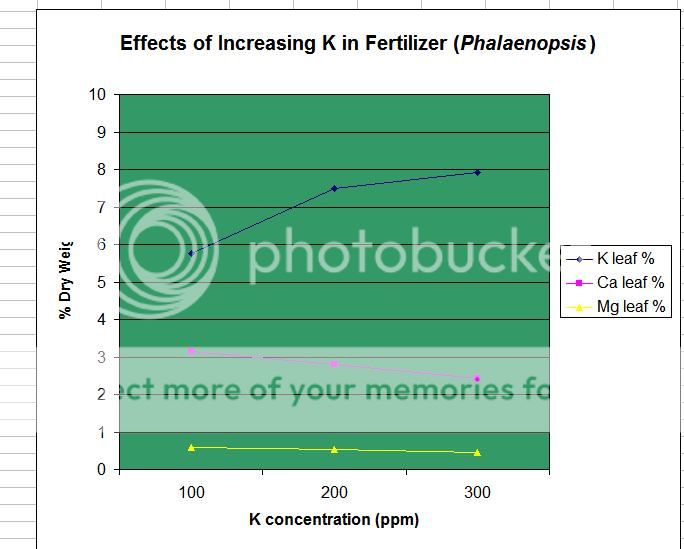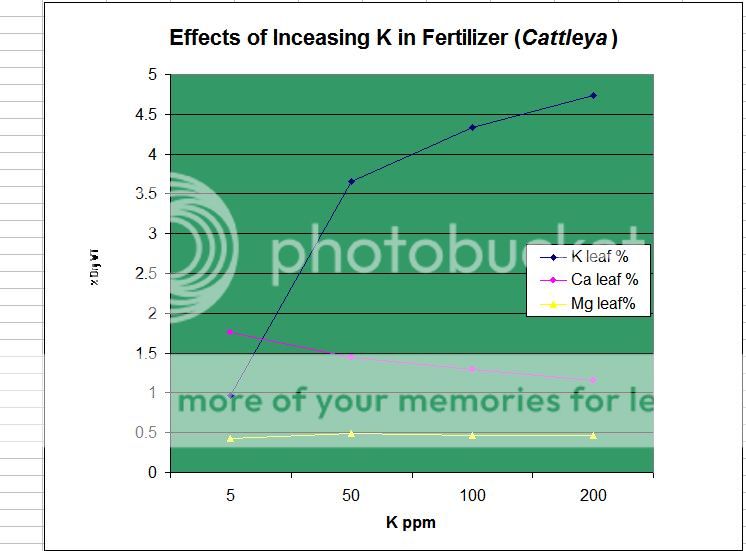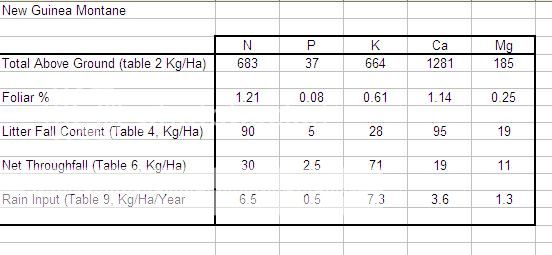Stone
Well-Known Member
:rollhappy:Love Cary in the back:rollhappy::rollhappy:

None of this changes the ratios
None of this changes the ratios


But what use are the ratios if the plants also get nutrients from other sources?
Here's a summary of the nutrient flux for PNG Montane forest from that article I posted.

Note the huge amount of Ca relative to K tied up in the above ground biomass, and the large amounts of nutrients moved around in the litterfall (also heavy in Ca).
The rainfall input doesn't come close to making a big dent on either the K or Ca, but based on net throughfall K is moving around with the rainfall easier than Ca. But net throughfall doesn't explain whats actually in the leaves and the rest of the total above ground biomass.
Who's Cherry picking?
The nutrients in the above ground biomas of which trees would hold the largest amount by far (in their leaves) would not be seen by the epiphytes.
What is leached from them and the rest of the biomass however would be.
Leaf content of the canopy is irrelevant because nutrients are leached from them at different rates
Leaf littler content also irrelevent because the epiphytes do not see it.
Throughfall and stemflow totally relevant as thats the only main nutrient input which they have access to.
As I said, things may be different at ground level however if you consider the huge amounts of rain passing through the humus layer in which the terrestrials grow, they are very likly to see similar NPK ratios as those above ground--at least during the monsoon when it rains for days on end.
I've done the NPKCa ratios for your NG chart
Litter P/N (P divided by N) 0.05...K/N 0.3...Ca/N 1.05
Throughfall P/N 0.08...K/N 2.3...Ca 0.3
So lets meet in the middle (very roughly) P/N 0.06...K/N 1.0...Ca/N 0.7
Now lets look at k-lite P/N 0.08...K/N 0.08...Ca/N 0.25
You're cluching at straws Lance. where the hell is an epipphyte going to get its nutrients from other than stemflow during a monsoon? When the rain stops the roots dry out and stop absorbing nutrients. Or is there a way plants take up nutrients without water that I don't know about?But what use are the ratios if the plants also get nutrients from other sources?
If K is high level in through fall water that hits the plant is double N,P,Ca, but the plant gets additional N,P,Ca from other sources the ratio changes to make K low.
Ratios are BS.
Leaf contents are BS. (Just as Xavier once noted) Plants take up nutrients at different rates so thier leaf contents vary widely.
The ratios of what arrives at the plant roots is ALL IMPORTANT!
The nutrients in the above ground biomas of which trees would hold the largest amount by far (in their leaves) would not be seen by the epiphytes.
What is leached from them and the rest of the biomass however would be.
Leaf content of the canopy is irrelevant because nutrients are leached from them at different rates
Leaf littler content also irrelevent because the epiphytes do not see it.
Throughfall and stemflow totally relevant as thats the only main nutrient input which they have access to.
As I said, things may be different at ground level however if you consider the huge amounts of rain passing through the humus layer in which the terrestrials grow, they are very likly to see similar NPK ratios as those above ground--at least during the monsoon when it rains for days on end.
What makes you so sure that epiphyte roots can't receive nutrients directly from the bark of a tree? Not through leaching but rather through a process of ionic exchange.
I have not seen that data
Isn't the leaf content of the canopy what add nutrients to rainwater as it falls through?
Not the total leaf content, only what leaches from it
Thats why I think the ratios are probably similar to epysBut there ar many species of epiphytes that grow at ground level that get leaf litter dropped on them.
How do you figure it is the only main nutrient source when it contains basically nothing? A couple ppms?
Tell me aonther and I will look at it
Do you think that the monsoon rains produce through fall with the same nutrient content as drier times of year?
No much lower consentrations.
You're cluching at straws Lance. where the hell is an epipphyte going to get its nutrients from other than stemflow during a monsoon?
When the rain stops the roots dry out and stop absorbing nutrients.
Or is there a way plants take up nutrients without water that I don't know about?
The ratios of what arrives at the plant roots is ALL IMPORTANT!
Apparently not since your throughfall ratios don't match the ratios in the above ground biomass.:sob:
Apparently not since your throughfall ratios don't match the ratios in the above ground biomass.:sob:
Whats the fixation with the above ground biomass. Trees get their nutrients from the soil, sometimes deep underground. Epiphytes get theirs from what comes to them.
(Just as Xavier once noted)
Even though he used tissue data extensively in his work with Orchiata bark.oke:
Absolutely not correct. This only applies to plants that go dormant.
When the monsoons stop the forest is not without moisture. It does not just stop. Condensation cycles moisture even during the dry season.
If you look at velemen, it is designed to act as a sponge. When wet it absorbs moisture and nutrients, when dry it turns white and protects the inside from desiccation. Water=uptake no water= no uptake. Why are we even arguing this point?
Trees get their nutrients from the soil, sometimes deep underground. Epiphytes get theirs from what comes to them.
Epiphytes get theirs from what comes to them.
And based on tissue sample data they are getting a lot more Ca from somewhere besides the throughfall.
Even though he used tissue data extensively in his work with Orchiata bark.oke:
To compare wild with cultivated as I recall and determine the difference which would also hint at the difference in nutrient ratios available.
From the ground to the trees to the epiphytes. The tree delivers nutrients from the ground to the epiphytes.oke:
If you look at velemen, it is designed to act as a sponge. When wet it absorbs moisture and nutrients, when dry it turns white and protects the inside from desiccation. Water=uptake no water= no uptake. Why are we even arguing this point?
Because it does not require monsoon rains to activate root functions as you implied. It does not require rain at all, only moisture. That moisture can come simply from night time humidity. Nutrients are not only delivered by flowing water (through fall).
To compare wild with cultivated as I recall and determine the difference which would also hint at the difference in nutrient ratios available.
Had nothing to to do with wild vs cultivated plants.
He essentially repeated the Cornell work (with a hybrid phal) and fixed fert concentration/application rate to look at the effect of different substrates on nutrient uptake and growth.
Enter your email address to join: